Tadesse Mesfin’s crowded market scenes are always strangely still. The canvas is packed with brightly dressed women, and yet their poses are frozen as though in marble; their lips never open in conversation. Some, like caryatids, bear their wares upon their head; others balance baskets on their hips with long, straight arms. Look from afar, as the painter explains to me from Addis Ababa over Zoom, and ‘the whole composition is flat’ – but look more closely and the figures begin to resolve into living, breathing beings. There is a fluid, cryptic play of gestures and glances – each responding to those of their neighbours or else fixing the viewer with a deep, impenetrable stare. Mesfin talks of the ‘push and pull between the warm colours of the faces under bright sun’.
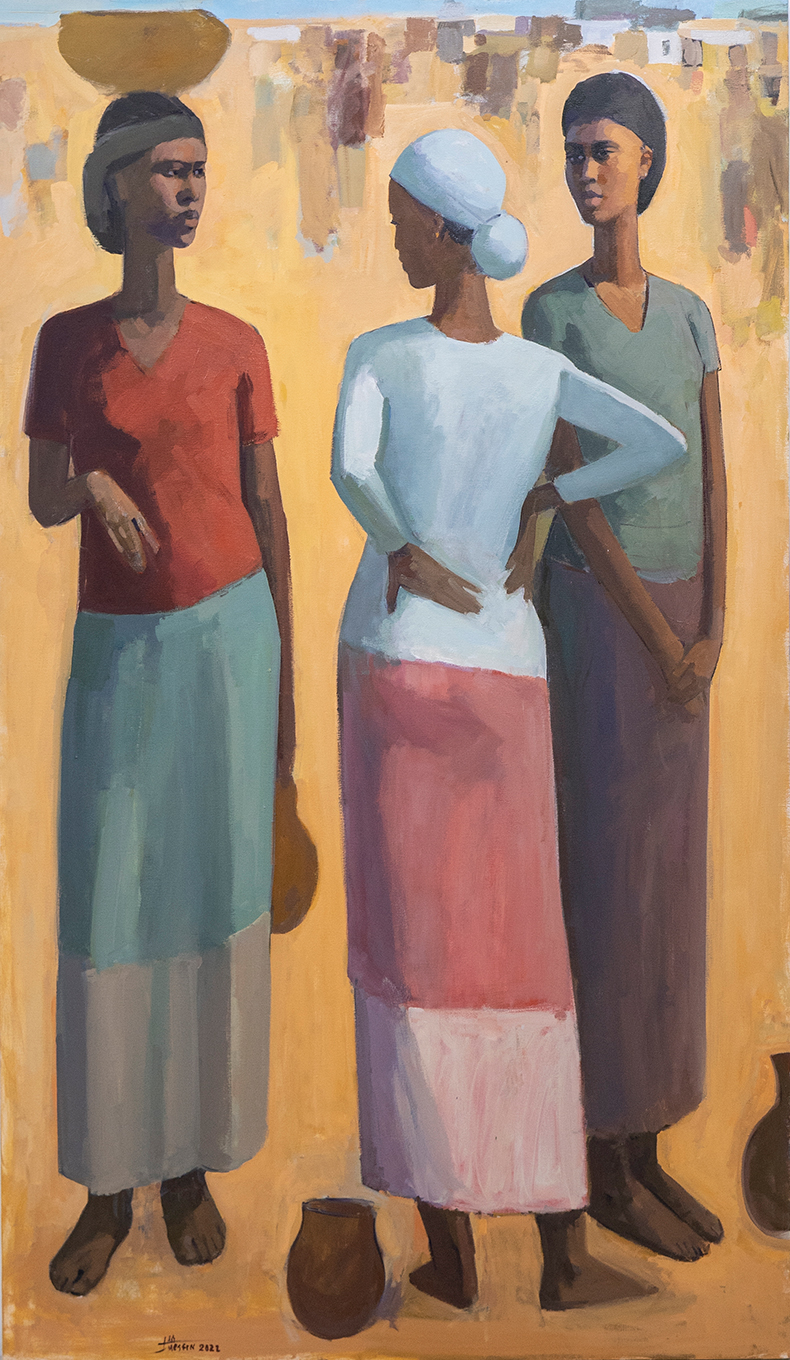
Column of Rhythm II (2022), Tadesse Mesfin. Courtesy the artist and Addis Fine Art
Mesfin has long been considered a pioneer of Ethiopian modernism in his own country, where he has taught from some 35 years at the Alle School of Fine Art and Design in Addis Ababa, training and mentoring a generation of talented painters include Merikokeb Berhanu and Tesfaye Urgessa. However, an exhibition currently on view at Addis Fine Art in London (until 17 December) is only his second solo show in Europe. ‘We were forgotten,’ Mesfin says of his generation on the world stage. The recent paintings in this exhibition, which manage at the same time to be coolly graceful and unabashedly joyful, are evidence of a singular vision of modern Ethiopia that deserves to be better known abroad.
They are also a far cry from the paintings with which Mesfin first made his name. Born in 1953 in Woldia, a small town in northern Ethiopia, Mesfin started drawing at the age of six – at first on his body, ‘because I didn’t have materials, so I started scratching on my hands and feet to make white lines’. When his family moved to Addis Ababa, he frequented the cinema halls of downtown, where he would try and copy scenes from films into his notebooks. At 15, he enrolled at the capital’s School of Fine Arts – ‘a proper education’ in those days, he says, ‘because we started early!’ – and left five years later with honours in painting and a gold watch, awarded to him at graduation by Haile Selassie.
He then did a stint at the National Theatre, working on costume design and scenography. Painting background canvases some 16m wide and 9m high gave him a thirst (and a knack) for working on a monumental scale that led him, in 1977, to the USSR. A scholarship was granted by the Soviet government – these were the years when the Derg, the military junta that ousted Selassie in 1974, was building ever closer ties with Moscow – for Mesfin to attend the Repin St. Petersburg Academy Institute of Painting, Sculpture and Architecture. It was the fulfilment of a ‘dream’, he says – ‘a chance to study the epic works of [Vasily] Surikov and [Ilya] Repin’. Works of this era include Agony of War (1983) – a lugubrious scene of men, women and children huddled together in a crepuscular street, beneath the figure of a cross that rises on a tall pole. While the context is the civil war in Ethiopia, the work clearly draws on the example of Repin – ‘who believed,’ Mesfin says, ‘that art had a social function, expressing the lives and struggle of the people’.
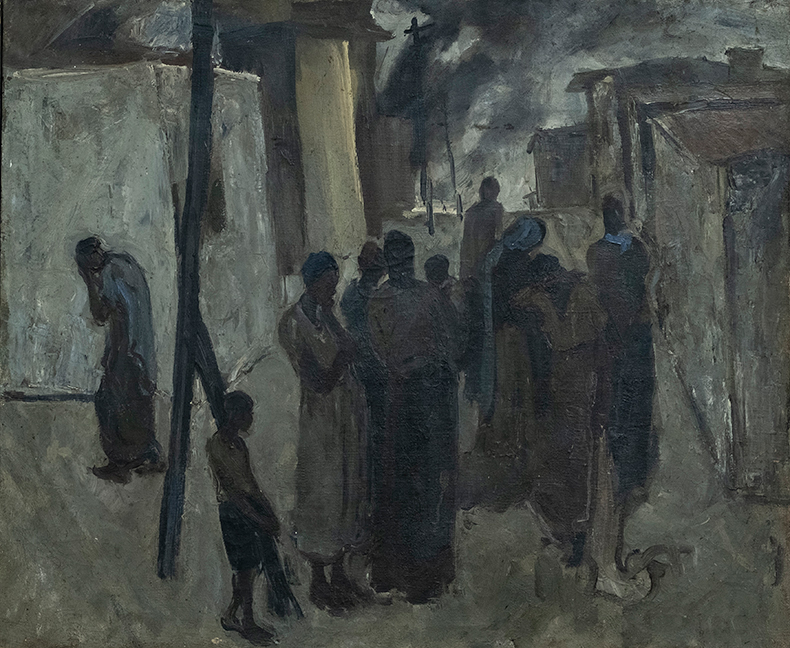
Agony of War (1983), Tadesse Mesfin. Courtesy the artist and Addis Fine Art
There were other connections that Mesfin began to make in Russia – between the legacies of the Coptic and Orthodox Churches, with their shared visual heritage of ‘murals, illuminated manuscripts, icons’ and much more. On his return to Ethiopia in 1984, he began to look more closely at Coptic traditions, distinguishing the ‘linear’ representation of figures in Coptic icons – ‘since they grew up in African soil’– from their more ‘painterly’ Russian equivalents. This realisation led him to closely study the features West African masks, as well as what modernists such as Picasso took from them. More and more, his art came to concern itself with the question of how to fuse this tradition with the painterly realist style in which he had been trained – ‘making [his figures] flat, and at the same time three dimensional’.
Soon after his return from Russia, Mesfin also began to travel around Ethiopia ‘from corner to corner’, finding himself entranced by the colours ‘under the equatorial sun’ in the south of the country and of the women in their traditional shawls coming to market. A world away from the ‘dark Leningrad winters’, these experiences transformed his palette. But they also gave him a new métier that has continued down to the present.
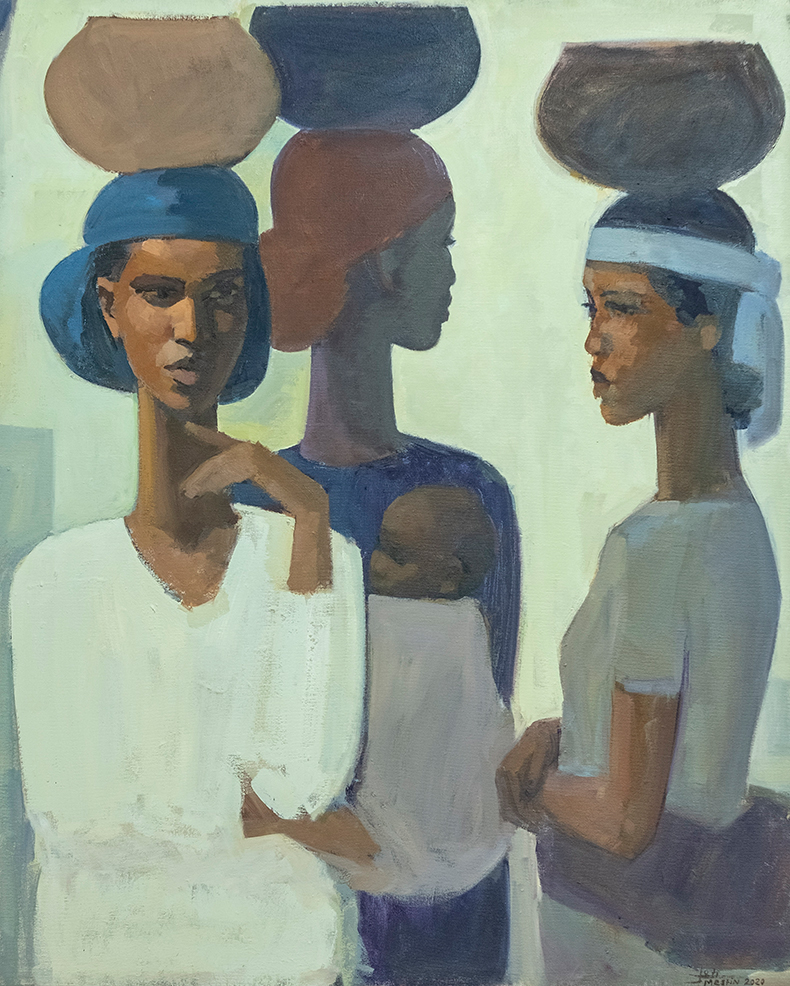
Pillars of Life: My Sister’s Keeper II (2020), Tadesse Mesfin. Courtesy the artist and Addis Fine Art
For Mesfin, the guleet (markets) of Ethiopia enable him to balance ‘variety and unity’. The artist’s skill at painting faces, with broad and confident brushstrokes rendering the extreme contrasts between light and shade under the fierce sun, brings them vividly to life; each appears to be in possession of a complex interiority. But at the same time, each is an integral part of the whole – ‘if one figure is looking forward,’ Mesfin says, then ‘another will be looking to the side, with another intermingling. The composition has to satisfy me with its variety.’
There is a sense in which these paintings are the culmination of a career spent absorbing and uniting influences – Coptic, Orthodox, West African, Russian, Cubist, Latin American. But Mesfin doesn’t see it quite like that. He recalls a semester spent in 1998 at the University of Florida, at which time he was producing abstract works inspired by the decorative motifs and ornaments found in Ethiopian castles and temples, such as the mosques of Lalibela or the fortresses of Gondar. An art critic suggested that his work had begun to look like that of Skunder Boghossian – another of the great Ethiopian modernists – prompting the return to figurative scenes that has proved so fruitful. ‘I didn’t want to walk in Skunder’s shoes,’ Mesfin says. Now, with the artist in his 70th year, he feels that he is ‘free from every influence’ at last.
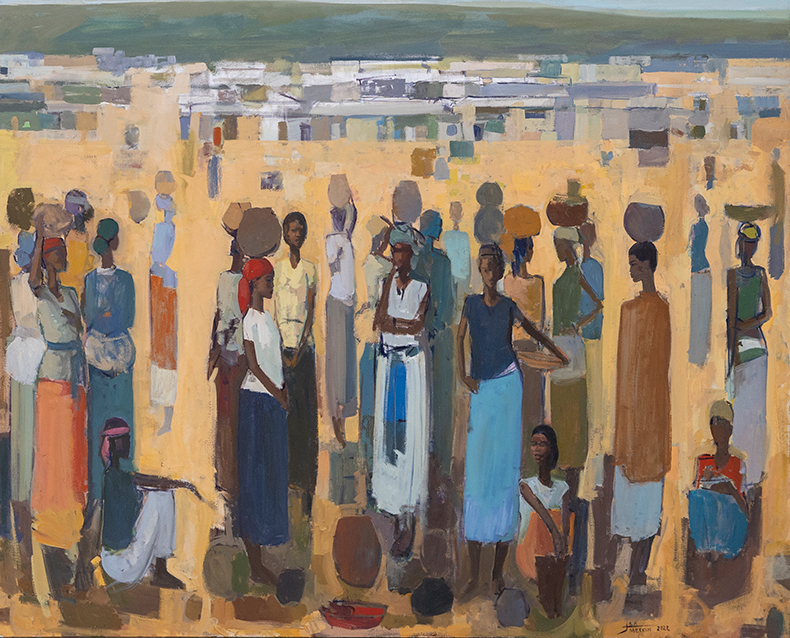
Column of Rhythm (2022), Tadesse Mesfin. Courtesy the artist and Addis Fine Art
‘Tadesse Mesfin: Column of Rhythm’ is at Addis Fine Art, London, until 17 December.
Unlimited access from just $16 every 3 months
Subscribe to get unlimited and exclusive access to the top art stories, interviews and exhibition reviews.


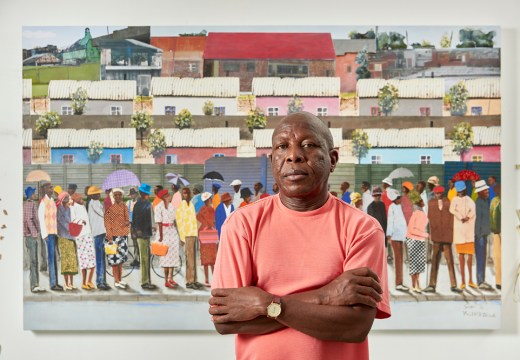
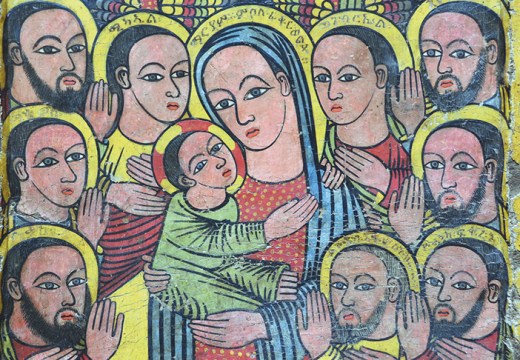
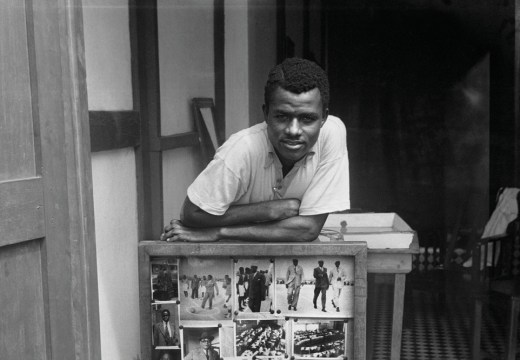









![Masterpiece [Re]discovery 2022. Photo: Ben Fisher Photography, courtesy of Masterpiece London](http://www.apollo-magazine.com/wp-content/uploads/2022/07/MPL2022_4263.jpg)
It’s time for the government of London to return to its rightful home